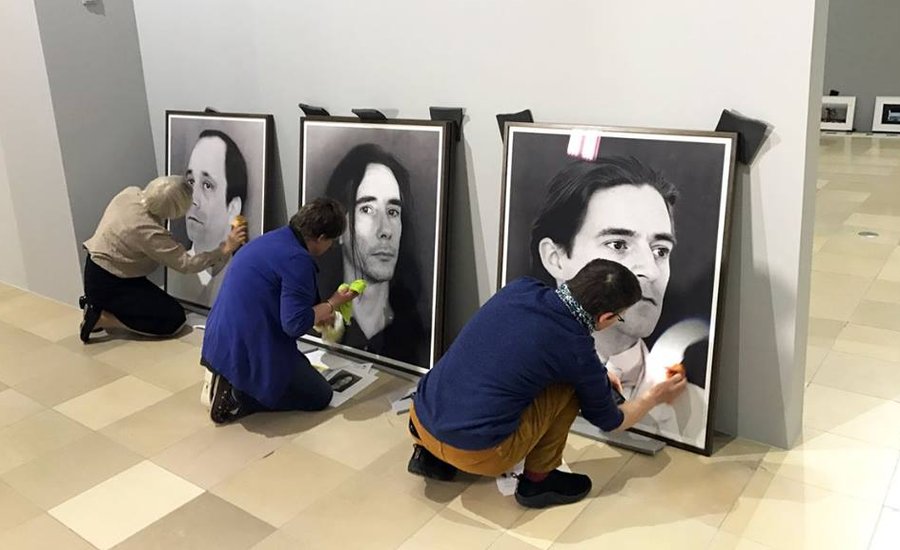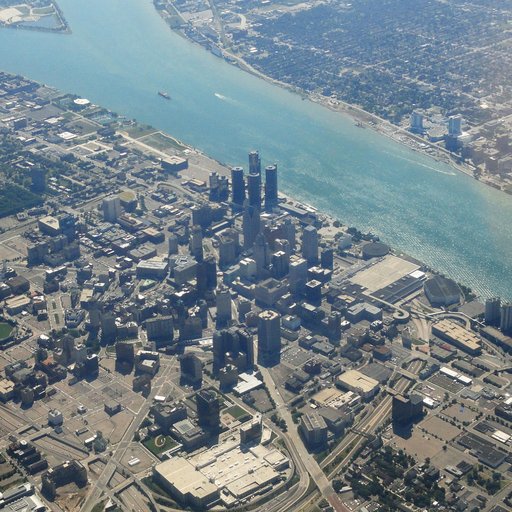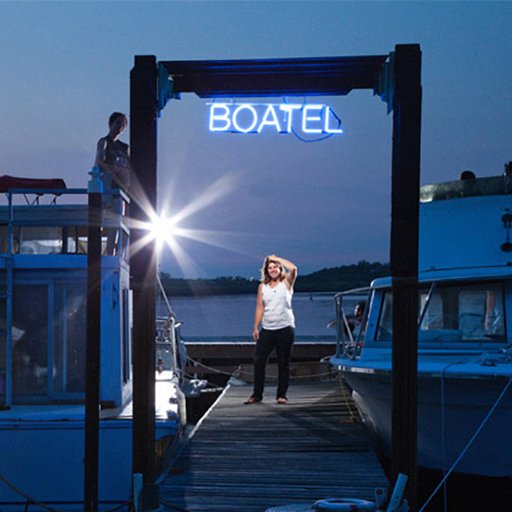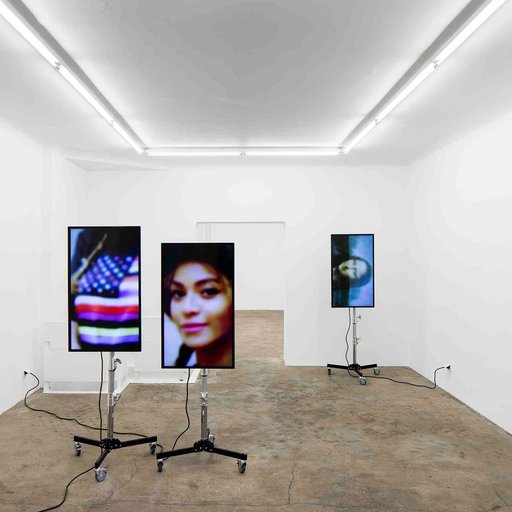Exhibitions often look effortless, but don’t fall for that ruse! Putting together a show is a lot of work, and if you don’t know what you’re in for, you might find yourself in over your head. I'm here to tell you how to mount your first exhibition, on a budget, from start to finish—including all the speed bumps you’ll hit on the way. I’m speaking partially from experience (I co-run the project space Kimberly-Klark in Queens, NY) while also taking my friend’s experiences and horror stories into consideration. So if you’re curious about curating but put-off by the other high-reaching guides out there (e.g., “Does the museum have room in their annual budget for your proposed retrospective?”) then this guide is for you.
THE IDEA
Flesh out your curatorial idea—write about it and talk it out with your friends. Don’t get too bogged down or overthink it though! You’re not trying to curate the next Primary Structures…yet. Once you feel confident with the idea and your wish list of artists, it’s time to reach out and make contact. Ask the artists if you can visit their studio one afternoon and see what they’re currently working on. If an artist is not local, try to organize a FaceTime or Skype session. The key is to keep your initial email short and snappy. Don’t spend too much time explaining every element of your idea or what works you think would be best for the exhibition—save those discussions for the studio visit!
PLANNING
Now it’s time to plan the exhibition. If you don’t have a space reserved yet, don’t fret. First you should see if the artists are on board. Send a follow-up email to the artists you visited detailing your proposal, planned dates, and others that you’re hoping to include in the exhibition. Hopefully they’ll say yes! If they decline, however, don’t take it personally. Sometimes they have another show coming up and don’t want to stretch themselves too thin. So, don’t close the blinds, blast Belle & Sebastian, and cry into your fluffy body pillow—keep looking for another artist who could fit in your exhibition.
Once everyone is good to go, it’s time to find a space. You can send proposals to galleries but be sure to do your research first. Some do not accept unsolicited proposals at all, so…back to the drawing board on that one. For those that do accept proposals, scroll through their previous programming and see if your exhibition would be a good fit. Take note of their submission guidelines and be sure to follow them perfectly—not doing so can cause the directors to write off your submission in a flash. If they don’t provide specifications, you’ll want to send a sleek PDF with a paragraph or two about your show idea, why you think it would be appropriate for that specific gallery, the list of confirmed artists, and some images of the work you’d like to show.
If you’re having trouble finding a proper white cube, think of somewhere unconventional to stage the show. Maybe your friend has a spare room in their apartment that you can use for the weekend. Maybe there’s a park by your place that’s the perfect site for your exhibition about “art.” Either way, don’t be afraid to experiment.
Once you have a location confirmed, it’s time to hammer out the finer details. Finalize the show dates, installation schedule, and work drop-off with your artists and the gallery. Talk about work pricing and buyer agreements because, well, you never know! While on that topic, you’ll also want to sketch out a preliminary budget for the show, even if you have very little money to spend. You’ll have to splurge on some things, like beer and photo documentation, which we’ll get to later, so be sure to account for that! Also, talk to your artists about shipping costs and a return time frame if applicable. Galleries usually cover shipping one way (or both ways), and you may want to budget for that as well.
Some artists and curators I know like to build a scale model of the exhibition space in order to help them visualize the show’s layout. This is a great idea! If you have an idea of where you want each piece to be, install will (hopefully) be a little less stressful.
Next, you’ll want to work on the press release. Loney Abrams’s guide to writing a good artist statement is also very applicable here, and covers all the bases. There are a lot of different strategies for composing a press release but the key is to keep it compelling. It will serve as an introduction to your ideas and the show in general, while also hopefully enticing press to write about it, and people to come see it—so make sure it isn’t a snooze (or couched in such an obfuscating method of expression that your tentative audience is always already distressed by a substantial and incurable migraine when trying to make sense of it all).
Finally, promote the show! Send out the press materials to magazines, to event listing websites, and to your family and friends. Promote the show on social media. Tell people about it when you see them at an opening, poetry reading, or in line at Chipotle. You’ve been working really hard on this show, and you want to make sure people come out.
INSTALLATION
The time has come! Your show is fast approaching, and it’s time to set up the space. Before pulling out the paint rollers, you’ll want to make a detailed plan. Determine how long it’ll take to prep the space, to install each work, and when you’ll be able to do so. Give yourself plenty of wiggle room. In fact, it’s best to plan for the show to be complete a day or two before the actual opening because something always goes wrong during install. Perhaps a piece takes longer to hang than expected, your drill battery runs out at the worst moment, or the floor paint is still wet days later. Best-case scenario, everything runs smoothly, you finish early, and then you’re able to pamper yourself before the opening—maybe fitting in a massage or mani-pedi.
After you’ve established a plan, head to the space and make sure it's all ready to go. Scan the walls to make sure all the holes are patched from the last show and maybe add an extra coat of paint to the walls. Then, bring all the works to the gallery and lay them out in place. Take a look around and gauge how the work feels in the space. Use this time to make any last minute decisions about the work’s placement before they’re attached to the wall (or floor!).
When it comes to installing the work, it’s better to be safe then sorry. If you’re uncomfortable, don’t be afraid to ask the artist for help! If they’re local, they may be able to come by and help you hang their pieces. You won’t look unprofessional or unknowledgeable. Most artists actually prefer to install their own work so they can be certain it looks absolutely perfect. If your artist is not local, ask them for specific install instructions (diagrams! phone photos!) and ask a friend to come over and help you. No matter what, make sure you aren't the only person installing. The less you're trying to juggle, the less likely you are to damage an artwork.
For the rest of the install process, try to keep to your schedule but not grow overwhelmed. Installation is usually stressful and intense, so take a few breaks. Walk around the neighborhood for a few minutes, breathe deep, and keep telling yourself “it’ll all come together soon.” Flipping out is going to get you nowhere—instead, focus that nervous energy into excitement and motivation!
THE OPENING
Maybe you finished a day early and are coming over from the salon, or maybe you’re still sitting in the gallery pulling your hair out while sitting in a puddle of your own tears and sweat. As the old adage goes, “the show must go on” and honey, it’s almost show time! A good tip is to have a few of your close friends (or gallery staff, if they’re available) come an hour or two before the opening to help you with all the last minute tasks. This includes sweeping the floors one last time or moving all the tools to the storage closet. You’ll also want printed copies of the press release and works checklist, and plenty of copies of each—you’ll be surprised at how few are left at the end of the night. The checklist should have a thumbnail image of each work next to some text that lists its artist, title, materials, and dimensions. You might want to have an extra copy for yourself that also lists prices in case someone is interested in buying.
Now, onto refreshments. I know, buying alcohol is not fun—it’s a big expense and it’s usually gone in the first hour anyway. Free wine (or beer) has become an expected component, however, and breaking with tradition would not be a good look. Don’t feel like you have to buy top shelf stuff to make a good impression—a good Budweiser or Boda Box will do. If you don’t want to spend any money, and don’t mind doing a little extra work, ask a brewery if they would want to sponsor your exhibition. Smaller local breweries looking for exposure might be down to give you free drinks in return for some images from the event and a few social media posts. If you’re on a super tight budget, a sponsorship is worth looking into! Just keep in mind, it often takes a couple of months for them to process the request, so plan ahead.
Okay, everything’s set up and the doors are open. Relax! Grab a drink! Use the opening to socialize, have fun, and celebrate the hard work you’ve done for the past few months! It’s always nice to stop and chat with old friends, but don’t stay too close to them. This is the perfect time to go around the room and try to meet new people. Who knows, maybe you’ll meet someone who runs a space and wants you to curate their next exhibition.
Before we move on—try to think of a good after party spot! A lively karaoke club, a dive bar nearby, or a good spot for some late night grub works perfectly. Don’t worry about people showing up. Spread the word enough and a good crowd is bound to follow.
DURING THE RUN
So the opening is over, you finally got a good night’s sleep, and you’re feeling satisfied with all of your accomplishments. Snap out of it—it’s not over yet! There’s still more work to be done. Don’t worry—nothing will be as strenuous as install.
First, you’ll need to document the show. There are a few different ways to go about this. If you have a friend that is a photographer, perfect! See if you can trade some art for their labor or pay them in pizza (yum). You could also rent a camera and try to document the show yourself. The important thing to remember is that your exhibition is temporary but diamonds…I mean, documentation is forever. You don’t want to have sloppy photos, and your artists won’t either.
Once the images are done, it’s time to send them out. There are plenty of great websites that feature exhibition images—like Art Viewer, AQNB, and OFluxo. Follow their submission guidelines to a T and maybe your images will get posted!
The best piece of advice I’ve heard is to live in the moment. I know too many artists and curators who get bogged down by the question of, “what’s next?” Next?! You just spent months working on this show! Instead of worrying about what’s next, think about what you can do to maximize the focus on your current exhibition. Organize an event, like a screening or lecture, to make use of the space while you have it. Reach out to artists, curators and writers you admire and try to schedule appointments. One-on-one walkthroughs are really special, leading to great conversation and some honest critique. Take note of their feedback—it could help make your next show even better than the current one.
WRAPPING UP
After the show closes, make sure to take down the work and return it to the artists promptly. Repair the space to its original condition, patching up all holes and repainting any scuff marks. You could host a post-closing dinner party, as a nice “thank you” gesture to the artists and space owners. Finally, use this time to reflect on what went well and what went wrong with the show so that you can be better prepared for next time. And keep in mind that something will always go wrong. The trick is not how to make everything perfect, but how to roll with the punches.
























